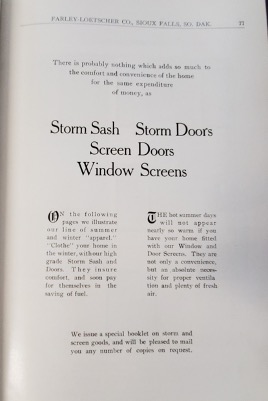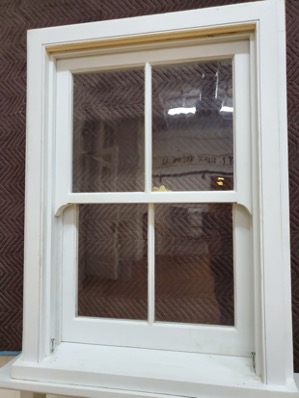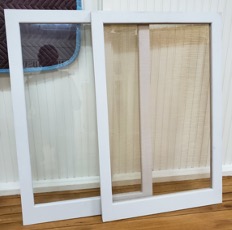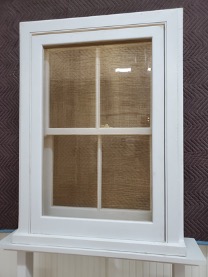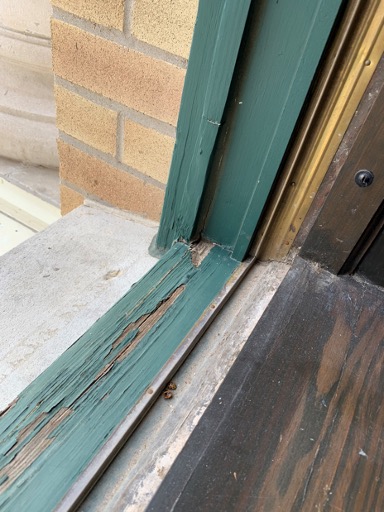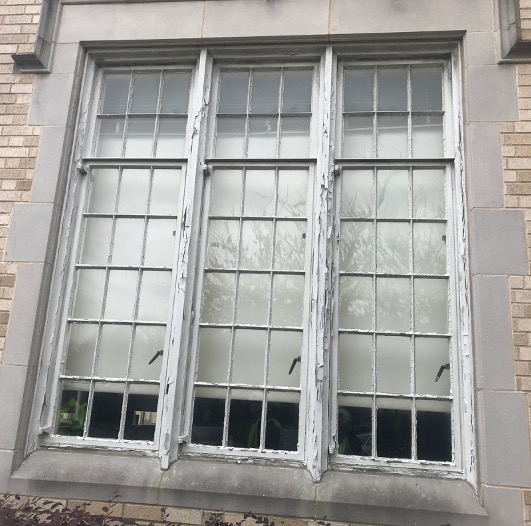Energy Efficiency and Historic Glass Challenges
There are historic methods for keeping a window energy efficient.
- Whole House / Whole Building Solutions
- True Value Add
- Long Term Costs of Energy
Energy Efficiency - Look at the Whole House
The question I like to address is whether historic windows are more energy efficient than new. To answer this, we need to look at the whole house. The energy efficiency, in my opinion, is misstated. People will compare a window that's a hundred years old to a new window and say there’s no comparison. I think you can take that old window and restore it and it will be very comparable to a new window.
We had our windows tested at an architectural windows lab for a project with the ASTM 283 test, which is a wind and water filtration. They failed. The slope of the sill was something that’s very important that we need to address. Water would actually run up the sill, so we developed some stops in the sill that stopped that from happening. We changed the weather stripping issues, and after two or three tests it passed. So you can rebuild an old window and make it as energy efficient as a new window.
Historic Methods
There are historic methods for keeping a window energy efficient, which I think are great solutions.
Here's a screenshot from a 1911 millwork catalog. Most of my information comes from these catalogs, and this place provided storm sash for windows. In an ideal world, you would put storm sashes on in the winter and put screens on in the summer. Now we live much more maintenance free.
When the storm sash is weather stripped, it can create a seal and it allows you to use your window on the inside and also allows you to create an energy efficient storm window.
An interior storm window can help too. We use copper screens because they’re so long-lasting.
Glass Challenges
- Performance
- Energy
- Sound
- Historic Integrity
- Structural Integrity
Glass ends up being the biggest challenge today. We’re in North Texas so we don’t have the same issues as someone in the Northeast. Our problem is heat gain, not heat loss. Insulated glass doesn't do us much good here. An insulated glass window will have an R-value of 2. Our single pane window will be an R-value of 1. So you've doubled your R-value, but your R-value is low compared to the walls of the house, which might be 14 or 20 or 30. Glass and the glass performance ends up being a big deal. With the architects we’re working with, the sound performance ends up being a bigger deal than the insulated glass.
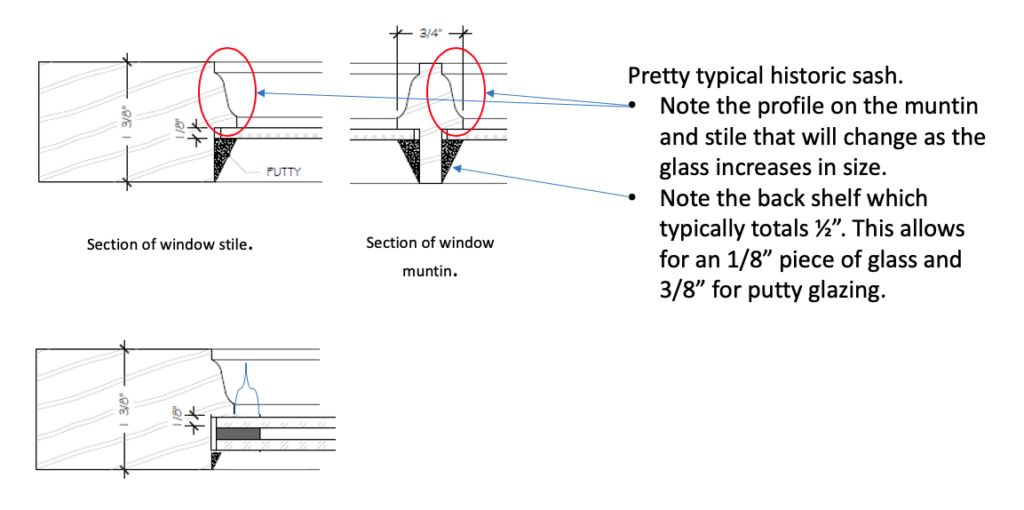
The problem with insulated glass is what it does and how it's made. On the image (shown above), you have a single pane of a double pane window in a historic setting. There’s a ¾” muntin bar, you see the glazing in back. If you drop down to that same size sash and try to put a piece of insulated glass in, even the thinnest you can get, you’ll see this black band running down around the inside of your window where you're seeing the insulating of that insulated glass. Furthermore, there's no way to hold that glass in except with an add-on piece of wood stop. There isn’t a glazing putty you can use because oftentimes the glazing putty will react poorly with the oils and the insulating and actually cause it to fail. There are all kinds of problems with doing that.

Some people try to overcome it and try to glue the muntin bars onto a big piece of glass. The other way is to increase the size of the muntins, but you end up with a real clunky fat window. Whether all that work is worth it is another question.

What we think is a good solution is laminated glass because most people we work with are looking for more sound transmission performance than the insulated performance, so we use laminated glass. In some cases, we can use the same muntins, profiles and glazing properties and not change anything and allow the laminated glass to perform better in an existing sash.

There probably isn’t a historic window that can carry a 1” thick piece of insulated glass. Just notice that ¼” of insulated glass carries a STC rating of 36. Realize that each jump in numbers is an exponential jump. It’s not just 1% better; it’s a much greater increase. STC is important. Glass is too.
Instead of changing the glass of an interior and an exterior storm—if energy is the issue—the quality of films that have come out might be the solution. They are fairly invisible and can stop the heat gain and the UV. We’ve had historic preservation officers approve them after review. We think these may be better solutions than changing out the glass for laminated. Think back to the envelope of the house.
If you’re talking about a pre-1940 house, the windows are the leakiest part. The home is typically uninsulated. The majority of the energy loss will go through the ceiling, then the doors and then the windows. It can be hard to think of it that way because if you’ve ever stood in front of a leaky window, you can feel the air blowing in! But it’s much more cost effective to weather strip and re-glaze that window than it is to replace all the windows with new ones. You won’t see that money back in an energy bill. A better solution would be to insulate the walls and ceiling, that would be a better bang for your buck.
Solutions That Work
Paint ends up being an important decision. Dark paints are really hard on windows and doors. We had a courthouse we worked on in West Texas and the longleaf doors just got beat up. It was a dark purple, which was a typical historic Victorian color. It only lasted 5 or 10 years. Think about what happened. There was no air conditioning, so the doors were left open all the time—they didn't really get the heat that they get today. When it's painted a dark color like this (Shown below), just realize your paint is not going to last or you’re going to have to paint more frequently.

Dark paint causes the wood to peel and moisture to come out it because it gets so hot. The mullions will twist and bow. Laminated glass can also become a maintenance nightmare trap where you can't get out. They can get cloudy and usually have a warranty for 15-20 years, but then you need to replace them.
This one has weather stripping in the sill in the bottom layer. I don’t like weather stripping there. It can be a dirt trap and a water trap. Some of the rotting and the flaking you see in the sill (Shown above) happen because of the paint color on the wood, especially when’s it’s dark paint. It can also happen because it’s sitting on a piece of stone, which can suck moisture out of the wood.

This is a church we're currently working on in Dallas where they have a steel window with a wood frame. This example speaks to the quality of old growth lumber. The wood frame sits on stone. It’s a beveled stone sill, which is typical of that Gothic style. For the lack of paint and maintenance, it hasn’t rotted at all—even a hundred years after installation. And that is a difficult place for that wood to perform.
You see the paint flaking, but we restored the windows by replacing the glazing and stripping the paint. This is a great example of another 100-year-plus set of windows.
Steps for Success
It’s very important to start with a survey of the building and to understand what’s going on. It’s best if you understand what’s typical of the windows in that particular building. Pull out a window or two as a test. It’ll show you the damage you’ll be working with. Oftentimes the sills and the check rails need work, but when you have rot you will need to handle it differently.
My experience is that teamwork and crafting a strategy together is really important. Be part of these discussions early. There needs to be ways of planning how to restore the windows that don’t compromise the future of the windows.
At Hull Millwork we specialize in residential and commercial window restoration work. View our gallery of window restoration projects or contact us today about your next project.


